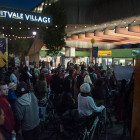
After a Lull in Protesting, Oaklanders Take to the Streets, Ready for Change
|
After a lull nationally in the protests erupting in the aftermath of the George Zimmerman verdict, things seem only to be heating up in Oakland.
Juvenile Justice Information Exchange (https://jjie.org/tag/feature2/page/7/)

After a lull nationally in the protests erupting in the aftermath of the George Zimmerman verdict, things seem only to be heating up in Oakland.
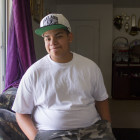
On a blistering May day in California’s Central Valley, most other 13-year-olds were in classrooms down the road. But Erick Araujo was under strict orders from his mother to stay inside with a U.S. history textbook.
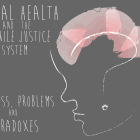
Georgia leaders are embracing reform in juvenile justice, but serious gaps and significant roadblocks still prevent many emotionally-troubled youth from receiving the best and most cost-effective care.
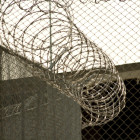
The G.A. Dept. of Juvenile Justice Commissioner announced Thursday the suspension with pay of 20 DJJ investigators.

A report released last week by the Tennessee Commission on Children and Youth calls for the state’s Dept. of Children’s Services to step up its efforts in meeting the needs of young people with psychological and other health problems.

Nebraska’s juvenile justice system will have a new focus on rehabilitation thanks to a bill signed into law Wednesday by Gov. Dave Heineman. Legislative Bill 561 (LB561), introduced by state Sen. Brad Ashford (I-Omaha), will allocate $14.5 million towards several new services, as well as a grant program to aid counties in treating juvenile offenders. The bill decreases the state’s dependency on juvenile detention programming, placing a greater emphasis on youth rehabilitation. The new measure also transfers juvenile offender supervision over to Nebraska’s Office of Probation Administration, which is subordinate to the state’s Supreme Court. Prior to the legislation taking effect, Nebraska’s juvenile populations were instead overseen by the state’s Department of Health and Human Services.

In a Red Hook, NY courtroom the offender, lawyer, prosecution, judge and the jury are all teenagers.

R. Gil Kerlikowske, Director, National Drug Control Policy / Photo by Lisa Pilnik
Early in his tenure as director of the White House Office of National Drug Control Policy, R. Gil Kerlikowske told a reporter he no longer wanted to use the term “war on drugs” to describe drug control policy. When asked what “bumper sticker” phrase he would use as a replacement, Kerlikowske responded that he thought the American public was “ready for a greater dialogue and discussion about our drug problem than a bumper sticker answer.”
Kerlikowske shared this anecdote at a forum on 21st Century Drug Policy Reform hosted by the Urban Institute, where he and other speakers emphasized prevention and treatment of substance abuse. “We have to approach drug policy from a public health standpoint, not just the criminal justice standpoint,” said Kerlikowske, emphasizing that programs and policies should be based on a foundation of science. He added that although his office has advocated this approach for four years, he’s only seen it begin to take hold in the past six months.
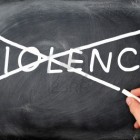
The initial results from a study analyzing youth violence in a small Denver neighborhood finds that the roots of adolescent delinquency may be found in tumultuous, early home-life experiences.
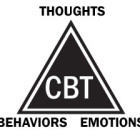
Enrolling young people in school-based, cognitive behavioral therapy (CBT) programs may lead to fewer arrests, improved educational performance and higher graduation rates, according to a new report released by the National Bureau of Economic Research. The study involved more than 2,500 young people in the 7th to 10th grades from Chicago neighborhoods with high crime levels. About half of the subjects participated in interventions provided by two area nonprofits, which included both after school programming and frequent meetings with a “pro-social adult.”
The interventions also included in-school CBT programming, which researchers said are “designed to reduce common judgment and decision-making problems related to automatic behavior and biased beliefs.”
Compared to a control group that did not receive treatments, researchers said violent offense arrests had fallen by 44 percent among young people who had participated in the programming, and arrests stemming from “other crimes” -- categorized as non-drug, non-property or non-violent offenses -- decreased by 36 percent. Additionally, youth involved in the programs demonstrated significant gains in overall educational outcomes, with researchers stating that the programming may result in a 3 to 10 percent increase in high school graduation rates. The programming also has major economic benefits, the authors of the report said.